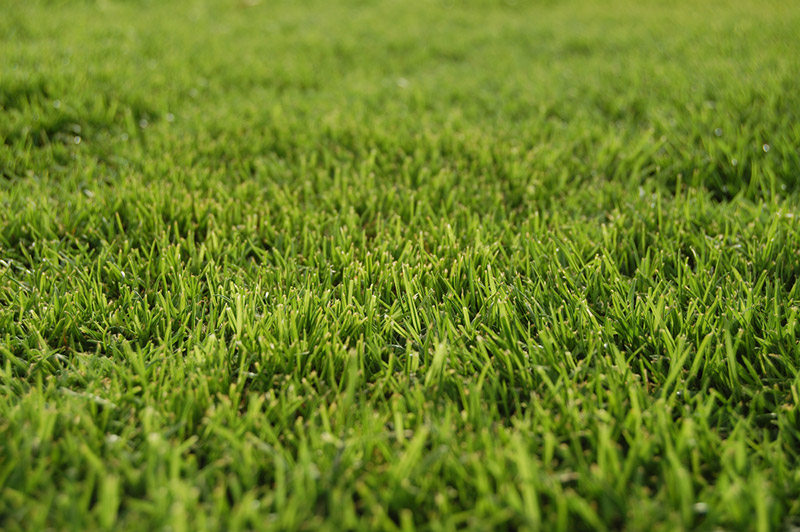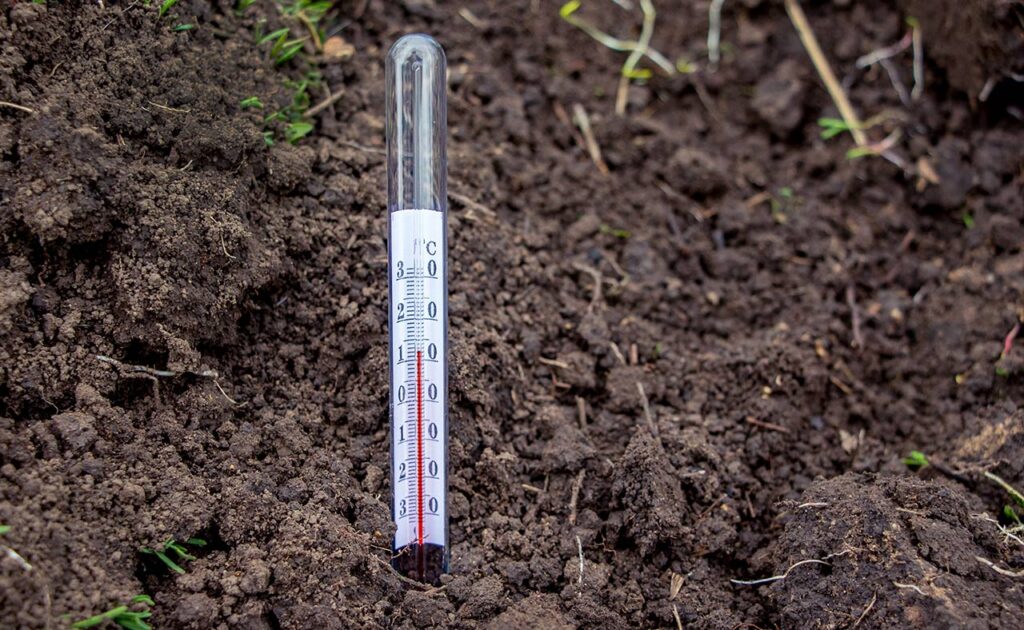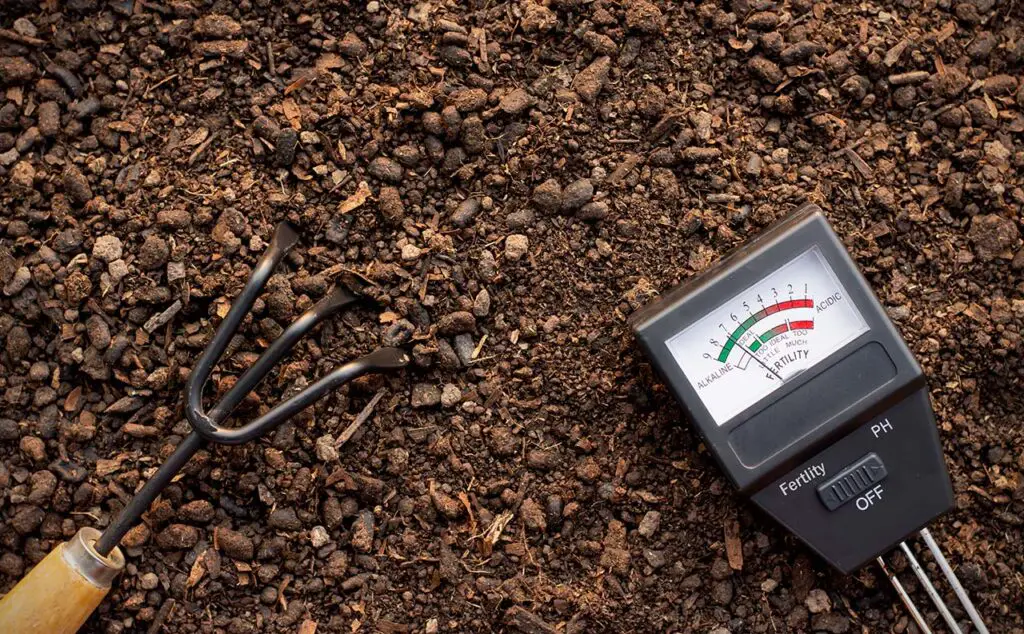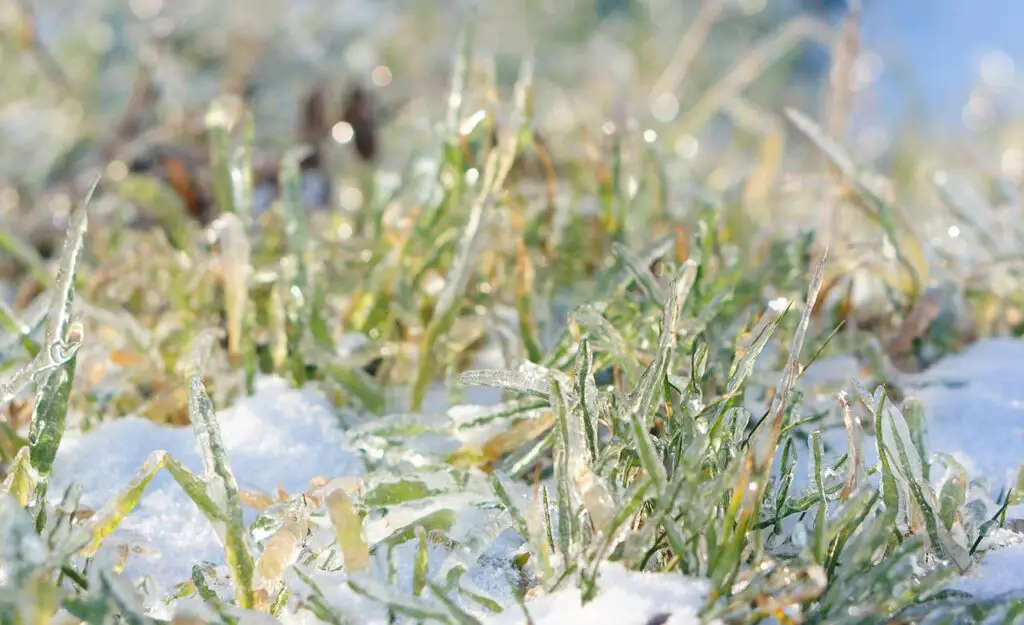When Does Bermuda Grass Turn Green?
Let’s talk about that gorgeous, warm-season turfgrass we all know and adore — Bermuda grass.
This bad boy’s a popular choice for lawns, especially in the southern parts of the U.S., thanks to its love for heat and its ability to withstand drought.
But to keep your Bermuda grass lookin’ its best, it’s super important to know when it turns green, so you can give it the right TLC at the right time.
Stick around, and we’ll tell ya everything you need to know about when Bermuda grass shows off its stunning green hues and how to keep your lawn lookin’ lush and fabulous all season long.
Climate Requirements: What Makes Bermuda Grass Happy and Green?
Before we dive into the nitty-gritty of when Bermuda grass turns green, let’s chat about its ideal climate conditions.
You see, Bermuda grass is a warm-season turfgrass and that means it thrives in warm weather.
Think tropical and subtropical regions where the sun’s shinin’ bright and temperatures are high.

Warm Temperatures = Happy Bermuda Grass
Bermuda grass loves baskin’ in the sun, and it truly shines in temperatures between 80 and 95°F (27 and 35°C).
In these warm conditions, it grows fast and turns that beautiful shade of green we all love.
So, if you’re livin’ in an area with hot summers, Bermuda grass might just be your lawn’s best friend.
How Climate Affects the Greening Process
Now, you might be thinkin’, “What’s climate got to do with my Bermuda grass turnin’ green?”
Well, the answer is – a lot! The warmer the climate, the earlier Bermuda grass starts to green up.
In cooler climates or during cooler seasons, Bermuda grass slows down its growth and might even go dormant, turnin’ a not-so-lovely shade of brown.
So, keepin’ an eye on your local climate and weather patterns is key to knowin’ when your Bermuda grass will turn green and how to care for it properly.
Seasonal Changes: When’s the Big Green Show?
Alright, so now that we’ve got a grip on Bermuda grass’s climate preferences, let’s chat about when this warm-season superstar typically turns green.
Spoiler alert: it’s all about the seasons!
Greening Up in Late Spring and Early Summer
Bermuda grass usually starts showin’ off its green side during the late spring and early summer months.
As the temperatures rise and the days get longer, Bermuda grass kicks into high gear and starts growin’ like there’s no tomorrow.
In fact, during these months, it’s not uncommon for it to grow an inch or more per week!
So, if you’re rockin’ a Bermuda grass lawn, late spring and early summer are the prime times to see it at its greenest and most vibrant.
Regional Climate and Weather Patterns Matter
Now, keep in mind that the specific time when Bermuda grass turns green can vary depending on your region’s climate and weather patterns.
In warmer areas like the deep south, you might see your Bermuda grass green up as early as March or April.
But in cooler regions, you might have to wait until May or even June for that glorious green transformation.
So, stay in tune with your local weather conditions, and you’ll be ready to enjoy your Bermuda grass’s green glow when the time’s just right!
Soil Temperature: The Unsung Hero of Bermuda Grass Greening
When it comes to gettin’ your Bermuda grass all green and gorgeous, there’s a secret ingredient in the mix that doesn’t get enough credit – soil temperature.
That’s right, the temp of the dirt beneath your lawn plays a major role in how and when Bermuda grass turns green.
Let’s dig in and see what’s up with soil temps and your grass’s green game.

The Magic Temperature: 65°F (18°C)
So, what’s the perfect soil temperature for Bermuda grass to start rockin’ that lovely green shade?
Generally, you’re lookin’ at a soil temp of around 65°F (18°C).
When the soil reaches this magic number, it’s like flippin’ a switch for your Bermuda grass, tellin’ it, “Hey, it’s time to wake up and grow!”
And that’s when you’ll start seein’ your lawn turn from brown and dormant to green and lively.
Why Soil Temperature Matters
You might be wonderin’, “Why’s soil temperature such a big deal for Bermuda grass?”
Well, it all comes down to root growth.
When the soil temperature is just right, Bermuda grass roots can grow and develop properly, which means they can absorb all the nutrients and water they need to support lush, green growth.
So, keepin’ tabs on your soil temperature is a key part of helpin’ your Bermuda grass lawn reach its full green potential.
Factors Affecting the Greening Process: It’s Not Just About the Weather
While climate and soil temperature play a huge role in when Bermuda grass turns green, there are other factors that can impact the greening process too.
From soil quality to your lawn care routine, these factors can make a big difference in how quickly your Bermuda grass greens up and how vibrant it looks.
I’ve got some of the most important ones for you to keep in mind.

Soil Quality: Foundation of a Green Lawn
Like a solid house needs a strong foundation, a healthy, green lawn starts with good soil.
If your Bermuda grass is planted in poor-quality soil, it might struggle to grow and develop that lush green color you’re after.
So, make sure your soil is well-draining, rich in organic matter, and has a pH between 5.8 and 7.0.
Proper soil conditions will set your Bermuda grass up for success and help it turn green faster.
Fertilization: Feedin’ the Green Machine
Another key factor in the greening process is fertilization.
Feedin’ your Bermuda grass the right nutrients at the right time can help it green up quicker and look its best throughout the growing season.
Generally, you’ll want to fertilize your Bermuda grass with a high-quality, slow-release fertilizer in the spring when the soil temperature reaches that magic 65°F (18°C) mark.
Keep an eye on your lawn’s needs and adjust your fertilization schedule as necessary to keep it in tip-top shape.
Irrigation: Hydrate for Green Greatness
Water is essential for Bermuda grass to grow and turn green, so make sure you’re givin’ your lawn the H2O it needs.
During the active growing season, aim to water your Bermuda grass deeply and infrequently, providin’ about 1 to 1.5 inches of water each week.
This helps keep the soil moist and encourage deep root growth, which in turn will help your grass turn green and stay healthy.
Lawn Maintenance Practices: Keepin’ It Green and Clean
Your lawn maintenance practices can also impact the greening process.
Mowin’ your Bermuda grass at the right height (usually around 1 to 2 inches) and keepin’ your mower blades sharp will help promote healthy growth and that desirable green color.
Also, be sure to aerate your lawn once a year to alleviate soil compaction and improve root development.
Stickin’ to a solid lawn care routine will help your Bermuda grass green up faster and look its best all season long.
Importance of Lawn Care and Maintenance: Keepin’ Your Bermuda Grass Lookin’ Fine
To make sure your Bermuda grass stays healthy, vibrant, and green, you’ve gotta give it some TLC.
Proper lawn care practices can make all the difference when it comes to the overall health and appearance of your turf.
Let’s break down some of the essential tips for keepin’ your Bermuda grass lookin’ fine all season long.
Mowin’ Like a Pro: Cuttin’ to the Chase
When it comes to mowin’ your Bermuda grass, it’s all about cuttin’ it to the right height and stayin’ on top of your mowing schedule.
Generally, you’ll want to keep your Bermuda grass around 1 to 2 inches tall.
Mowin’ it too short can stress the grass and lead to a less-than-stellar green color.
Also, make sure to keep your mower blades sharp to avoid tearin’ the grass, which can make it more susceptible to diseases and pests.
Watering Wisdom: Drench, Don’t Drown
Waterin’ your Bermuda grass properly is crucial for keepin’ it green and healthy.
Aim to give your lawn about 1 to 1.5 inches of water per week, waterin’ deeply and infrequently.
This encourages deep root growth and helps prevent common turf issues like fungus and shallow root systems.
Just remember, drench, don’t drown – overwatering can cause just as many problems as underwatering.
Fertilizing Facts: Feeding Your Lawn Right
To keep your Bermuda grass lookin’ lush, you’ll need to feed it the right nutrients.
Use a high-quality, slow-release fertilizer, and apply it in the spring when soil temperatures hit around 65°F (18°C).
Make sure to follow the manufacturer’s recommendations for application rates and adjust your fertilization schedule as needed to keep your grass green and healthy.
Aeration Action: Breathing Life into Your Lawn
Ddon’t forget to aerate your Bermuda grass lawn at least once a year.
Aeration helps alleviate soil compaction, which can stifle root growth and limit your grass’s ability to take up nutrients and water.
By giving your lawn some breathing room, you’ll promote healthy root development and set the stage for a gorgeous green Bermuda grass lawn.
A little bit of attention goes a long way when it comes to keepin’ your Bermuda grass lookin’ great.
Dormancy Period: Hibernatin’ Bermuda Grass and Preppin’ for the Green Scene
Don’t freak out when your Bermuda grass turns brown durin’ the cooler months – it’s just takin’ a little nap.
You see, Bermuda grass goes dormant when temperatures drop, and that’s totally normal.
But just ’cause it’s snoozin’ doesn’t mean you can slack off on your lawn care duties.
Here are some tips to keep your Bermuda grass happy and healthy durin’ its dormancy period, so it’ll bounce back and green up real quick when the mercury rises again.
Chill Out on Mowin’: Give Your Lawn a Break
When your Bermuda grass is dormant, it’s the perfect time to give your lawn mower a break too.
Since your grass ain’t growin’ during this time, you don’t need to mow it as often.
Just be sure to keep the grass a bit taller (around 2 inches) before it goes dormant to provide some extra insulation against the cold.
Hold Up on Waterin’: Less is More
Your Bermuda grass won’t be as thirsty durin’ its dormancy period, so you can ease up on waterin’.
In fact, overwaterin’ during this time can lead to some nasty turf issues like rot and disease.
Just keep an eye on the weather and provide a lil’ supplemental water if you ain’t gettin’ any natural precipitation for a while.
Fertilizer Freeze: Hold Off Till Spring
When it comes to fertilizin’ your Bermuda grass durin’ dormancy, it’s best to hit the pause button.
Since the grass ain’t actively growin’, it won’t be able to take up the nutrients you’re tryin’ to feed it.
Hold off on fertilizin’ until soil temperatures reach around 65°F (18°C) in the spring, and your Bermuda grass will thank you by greening up in no time.
Keep It Clean: Clear Debris and Leaves
Even though your Bermuda grass is snoozin’, you still gotta keep it clean.
Make sure to clear any fallen leaves and debris from your lawn to prevent smothering the grass and promotin’ fungal growth.
A tidy lawn is a healthy lawn, even when it’s dormant!
By showin’ your Bermuda grass some love during its dormancy period, you’re settin’ the stage for a quick and vibrant green-up when the temperatures rise.
Overseedin’ with Cool-Season Grasses: Keepin’ It Green All Year Long
If watchin’ your Bermuda grass lawn go brown durin’ the cooler months bums you out, there’s a solution – overseedin’ with cool-season grasses.
This trick can keep your lawn lookin’ green even when your Bermuda grass is takin’ a nap.

How to Overseed: Layin’ the Groundwork
Overseedin’ your Bermuda grass lawn with cool-season grasses is a pretty straightforward process.
You’ll want to get started in early fall, as this gives the cool-season grasses enough time to establish themselves before winter hits.
Here’s a quick rundown of the overseedin’ process:
- Mow your Bermuda grass a bit shorter than usual to make way for the new seed.
- Use a core aerator or power rake to loosen up the soil and create some space for the new grass seed.
- Spread the cool-season grass seed evenly across your lawn, followin’ the recommended seedin’ rate on the label.
- Water the area well, and keep it consistently moist until the new grass is established.
Choosing the Right Cool-Season Grass: The Perfect Match
When it comes to pickin’ the right cool-season grass to mix with your Bermuda grass lawn, you’ve got some options.
Here are a few popular choices that’ll give your lawn that green glow even during the cooler months:
- Perennial Ryegrass: This grass germinates quickly, has a fine texture, and can stand up to heavy foot traffic. It’s a top choice for overseedin’ Bermuda grass lawns.
- Fine Fescue: With its fine texture and shade tolerance, fine fescue can be a great addition to your Bermuda grass lawn, especially in areas that get a bit less sun.
- Tall Fescue: If you’re lookin’ for a more drought-tolerant option, tall fescue might be your go-to. This grass is also more resistant to pests and diseases.
Keep in mind that overseedin’ with cool-season grasses requires some extra maintenance, like mowin’ and waterin’, during the cooler months.
But if you’re up for the challenge, you’ll be rewarded with a green and gorgeous lawn all year long!
Wrappin’ It Up: Green Bermuda Grass All the Way
Knowin’ when Bermuda grass turns green is crucial for proper lawn care and maintenance.
Remember, this warm-season turfgrass loves the heat, and it’ll start showin’ off its true colors when soil temperatures hit around 65°F (18°C).
A variety of factors, like soil quality, fertilization, irrigation, and proper maintenance, can influence the greening process.
Don’t forget that Bermuda grass goes dormant and turns brown in the cooler months.
You can care for your lawn during this time to make sure it springs back to life quickly when temperatures rise.
And if you want a green lawn year-round, consider overseedin’ with cool-season grasses to keep things lookin’ fresh even when your Bermuda grass is snoozin’.

